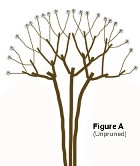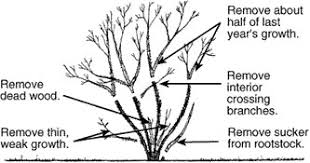|

A Glossary of Landscaping Terms
What good are landscaping articles and websites if you don’t understand the terminology? Knowing the proper terms of landscaping and gardening goes a long way to understanding and improving your own green spaces.
Annual – A flower or shrub that is described as an “annual” is one that appears or blooms for only one growing season. It blooms all season but doesn’t come back the next year. Annuals must be replanted every season or every year for continuing color.
Perennial – A perennial is a plant that grows and blooms throughout the year. Most perennials bloom either in the spring, summer or fall before becoming dormant in the winter. Then, in the spring they reappear during their blooming period with more color.
Irrigation – Irrigation has to do with the control and placement of water. Irrigation systems are the networks of hoses, pipes and drains that are put into place in your yard or garden to deliver the right amount of water to the plants and grass at the right time.
Aerate – To “aerate” is to open up the ground or garden to more airflow and exposure to things like fertilizer and water. When you aerate a yard, you simply poke holes through the grass into the dirt using a special spiked tool.
Prune – To prune is to simply cut back growth. You might prune away the dead branches and flowers on a plant that is past its growing season or prune back bushes to stay in a desirable shape throughout the year, for example.

Don’t Murder Your Crape Myrtles
There is a term known among gardeners that is used very frequently this time of year – Crape Murder. Even if you’re not actually a gardener, you probably know what Crape Murder is because you’ve seen all of your neighbors do it, all of the local businesses do it and even some ill-informed gardening companies do it. Crape Murder occurs when you cut off all the branches of a crepe myrtle in the spring – leaving the plant as a stump in many cases.
Crape myrtles are ornamental trees destined to grow up to fifteen or twenty feet. The branches that many people cut off every year are supposed to grow and become thick and sturdy so that they can support the brilliant flowers that bloom on these plants annually. Unfortunately, when you cut off the branches and force new wimpy branches to grow anew, you’re depriving your crepe myrtle of proper support and the branches tend to lean, often dramatically, reaching to the ground because the skinny new branches can’t support the weight of the blooms.
When you go to trim your crepe myrtles, don’t hack off all of the branches. Instead, trim away the branches that are overlapping and thin out the middle of your crape myrtle so that light can reach all the portions of your tree. A good rule of thumb is this – never cut back a branch or limb larger than your largest finger. Take about 2/3rd off the longest branch from last year. Your plant should never look like you’ve lopped the top of it off.
Let Landscape Associates handle the treatment of your Crape Myrtles. They will thrive under our care and add beauty and color to your home.
Landscape Tip of the Month
Monkey grass is a versatile and popular ground cover in the south. To keep it healthy and looking its best, it should be pruned and cut back in late winter or very early spring before new growth starts. The easiest way to cut back Monkey grass is to set the lawn mower on the highest setting and cut the grass. This will remove the dead and yellow leaves from last season and give your Monkey grass a fresh start for the summer months.  |

Pest of the Month: Fire Ants
Fire ants. The very word makes most of us cringe. Painful bites and tremendous mounds can make gardening or mowing the yard a challenge. In many areas this is a year-long problem. When dealing with fire ants, you have a few options to handling the problem, although it’s likely that you’ll continue to face trouble with the ants regardless of your solution – they are generally good at staying alive one way or another.
To treat for fire ants, first decide if you want to go with organic solutions or the chemical variety. The organic solutions, which usually include things like dried molasses and citrus peels, can dissuade ants from being in a particular area, but they are generally not as effective as the chemical treatments for eliminating ant colonies completely. Chemical treatments are usually sprinkled onto the mound directly or across the yard as a whole. Depending on the strength of the treatment, ants may be gone in as little as few hours.
Some ant treatments encourage ants to move while other options prevent the ants from reproducing by making them sterile. Still others poison the ants and eventually wipe out a colony as a whole. When using chemical ant treatments, it’s also important to remember that the strong poisons are also dangerous for household pets, other forms of wildlife and young children as well. Be sure use precaution when handling ants not only to prevent painful bites, but to prevent accidental poisoning as well.
Landscape Associates is equipped to handle fire ants and other lawn pests. Call us today to schedule an appointment.

February Rose Pruning
February is the best month to begin trimming your roses. While it can be a bit nerve-wracking to start making big cuts on your favorite rose bushes, understand that roses are very resilient and they will grow back bigger and better than ever, even if you over prune them a bit now.
When pruning roses, your goal is to remove the weaker stems and the rangy look that can develop over the high growth season of the summer months. Look first at the bottom of the rose bush. The thick, healthy canes, or stems, of the plant should be left to support future growth. The thinner canes that crowd around the thicker canes can be pruned back.
Once the canes have been trimmed out from the bottom, prune away the crossing branches near the top of the plant. You want to finish your pruning with a rose bush free of overlapping branches future, healthy growth. 
Landscape Associates lawn maintenance crews can help prepare your shrubs and lawn for the upcoming warm weather. Call to schedule and appointment today.
Quick and Easy Mexican Chicken

- 4 skinless, boneless chicken breasts
- 1 cup salsa
- 1 cup shredded Cheddar cheese
- 1 clove garlic, minced
- 1 pinch each salt, black pepper, ground cumin
Preheat oven to 375. Heat a greased skillet to medium. Rub chicken pieces with salt, pepper and cumin and add to hot skillet. Brown on both sides and cook until no longer pink. Transfer to casserole dish, top with salsa and cheese. Bake for 15-20 minutes until cheese is bubbly and starts to brown. Serve over rice or buttered noodles.
*From Allrecipes.com
|
